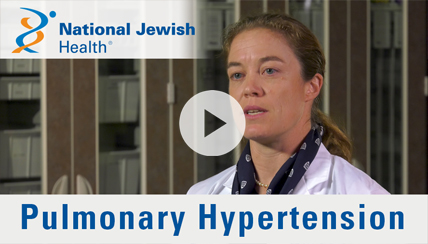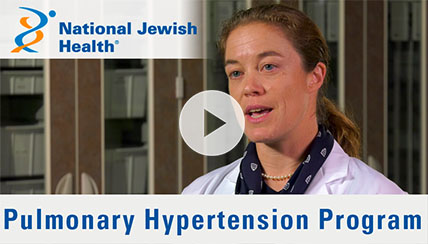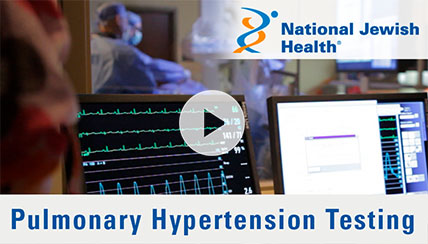How is Pulmonary Hypertension Diagnosed at National Jewish Health?
National Jewish Health Pulmonary Hypertension expert M. Patricia George, MD, explains how a right-heart catheterization is used to diagnose pulmonary hypertension or high blood pressure in the lungs.
Watch the video to learn more.
Transcript:
A right-heart catheterization is how we make the diagnosis of pulmonary hypertension.
When a patient is sent for a right-heart catheterization, they go to the cath lab, which looks a lot like an operating room.
It’s a very clean environment and people are gowned and gloved and lots of monitors, etc.
We don’t routinely sedate a person for this procedure because the patient themselves is actually involved.
We ask people to breathe certain ways so we can get the most consistent and reliable numbers.
It is something that we talk with patient the whole way through and so they should feel comfortable throughout the entire procedure.
It takes about twenty minutes to perform.
The longest period of time is waiting to do the procedure and recovering afterwards.
Related Videos
Related Health Insights and News
Want to use this on your website? Fill out the content usage request form and then copy this code: https://youtu.be/q__Sp_2HCW8








